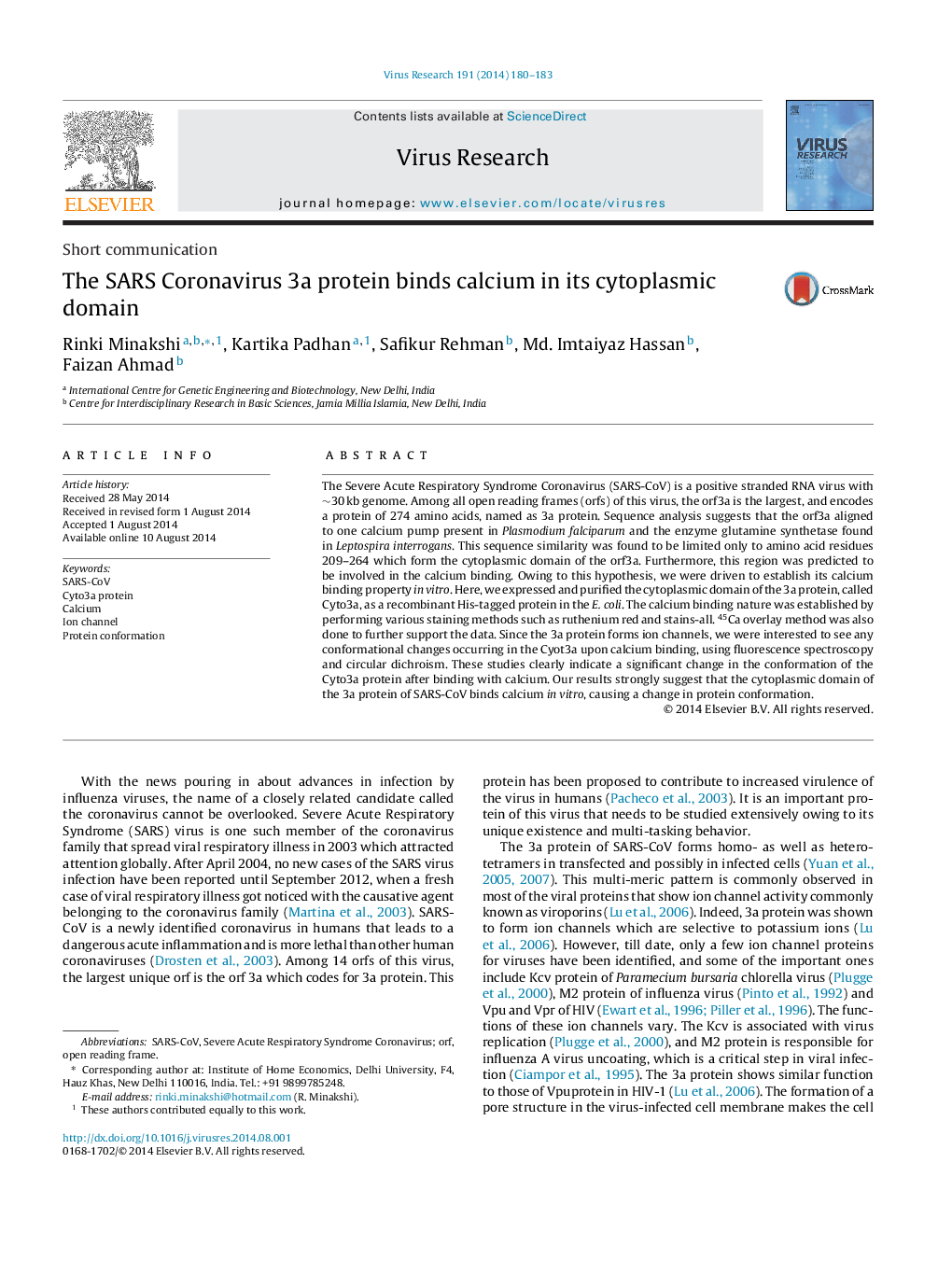| Article ID | Journal | Published Year | Pages | File Type |
|---|---|---|---|---|
| 6142365 | Virus Research | 2014 | 4 Pages |
â¢We expressed and purified the cytoplasmic domain of the 3a protein.â¢Cyto3a domain binds calcium.â¢Calcium binding causes a conformational change.â¢3a protein in vivo to have significant role in viral pathogenesis.
The Severe Acute Respiratory Syndrome Coronavirus (SARS-CoV) is a positive stranded RNA virus with â¼30Â kb genome. Among all open reading frames (orfs) of this virus, the orf3a is the largest, and encodes a protein of 274 amino acids, named as 3a protein. Sequence analysis suggests that the orf3a aligned to one calcium pump present in Plasmodium falciparum and the enzyme glutamine synthetase found in Leptospira interrogans. This sequence similarity was found to be limited only to amino acid residues 209-264 which form the cytoplasmic domain of the orf3a. Furthermore, this region was predicted to be involved in the calcium binding. Owing to this hypothesis, we were driven to establish its calcium binding property in vitro. Here, we expressed and purified the cytoplasmic domain of the 3a protein, called Cyto3a, as a recombinant His-tagged protein in the E. coli. The calcium binding nature was established by performing various staining methods such as ruthenium red and stains-all. 45Ca overlay method was also done to further support the data. Since the 3a protein forms ion channels, we were interested to see any conformational changes occurring in the Cyot3a upon calcium binding, using fluorescence spectroscopy and circular dichroism. These studies clearly indicate a significant change in the conformation of the Cyto3a protein after binding with calcium. Our results strongly suggest that the cytoplasmic domain of the 3a protein of SARS-CoV binds calcium in vitro, causing a change in protein conformation.
